Loading Gauges (from Ratio Kits)
I needed a self contained task so this week I have been making up a batch of Ratio Loading Gauges of the GWR and GWR/LMS varieties:
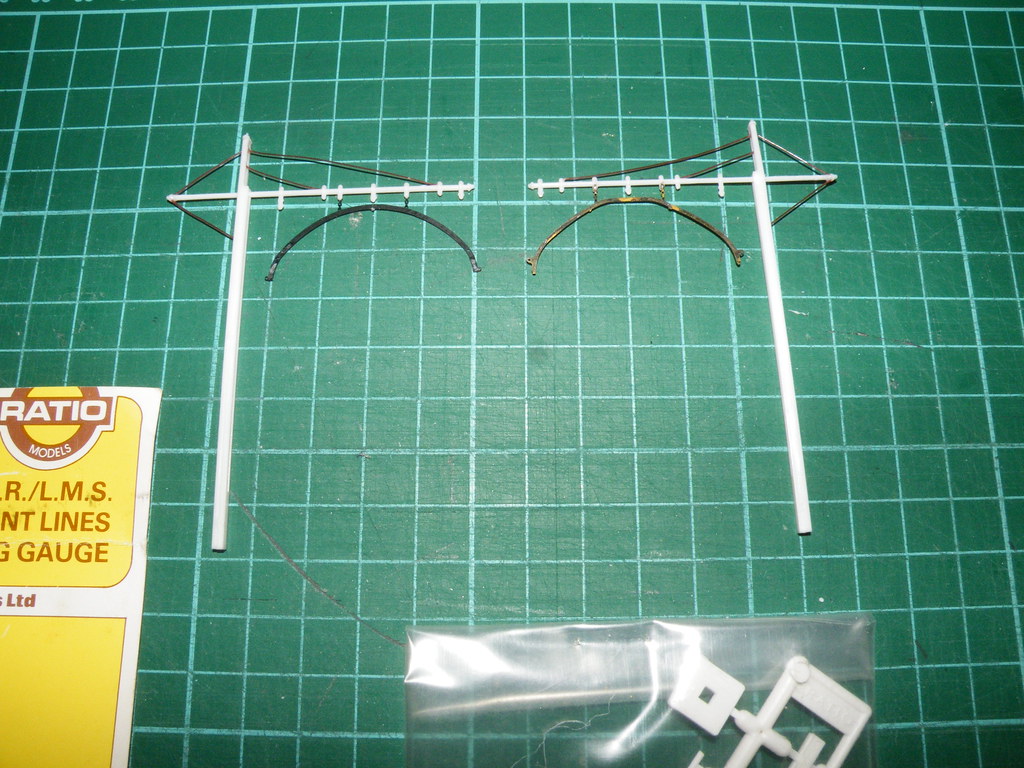
The kits are relatively straightforward and I fixed them together using Butanone solvent. The kits do however contain two different diameters of plastic 'rod' with the suggestion that the smaller rod can be used to make up the rigging for the operating mechanism.
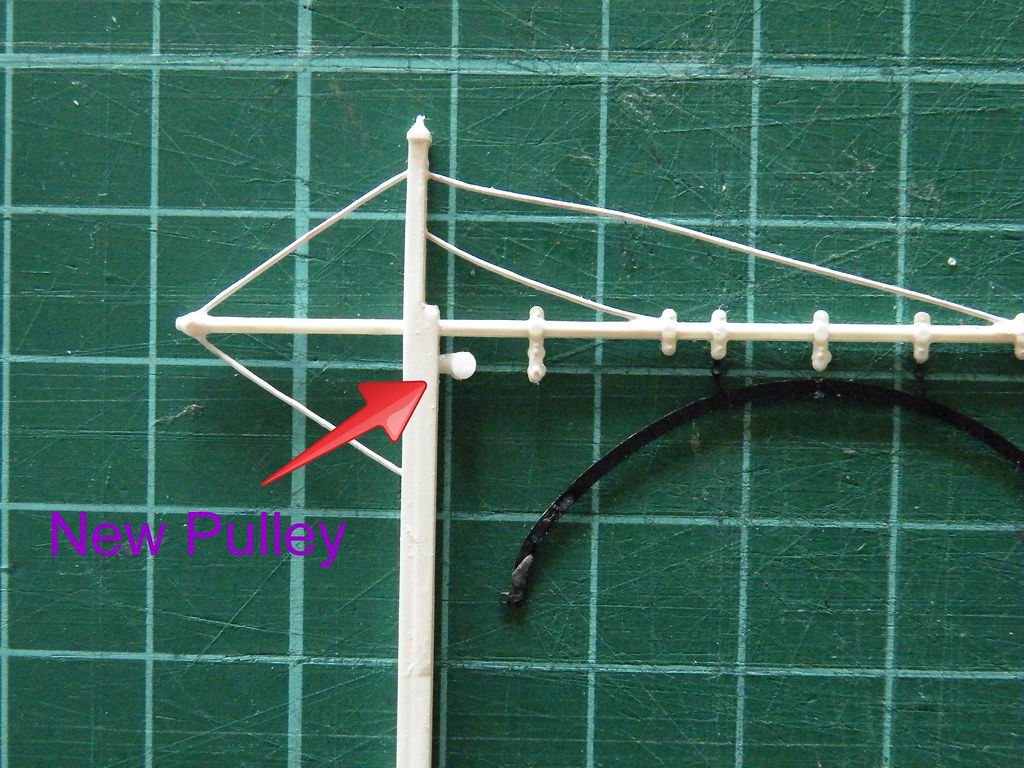
However it seems to me that if the rigging is to be fitted then there is a pulley missing from the kits.
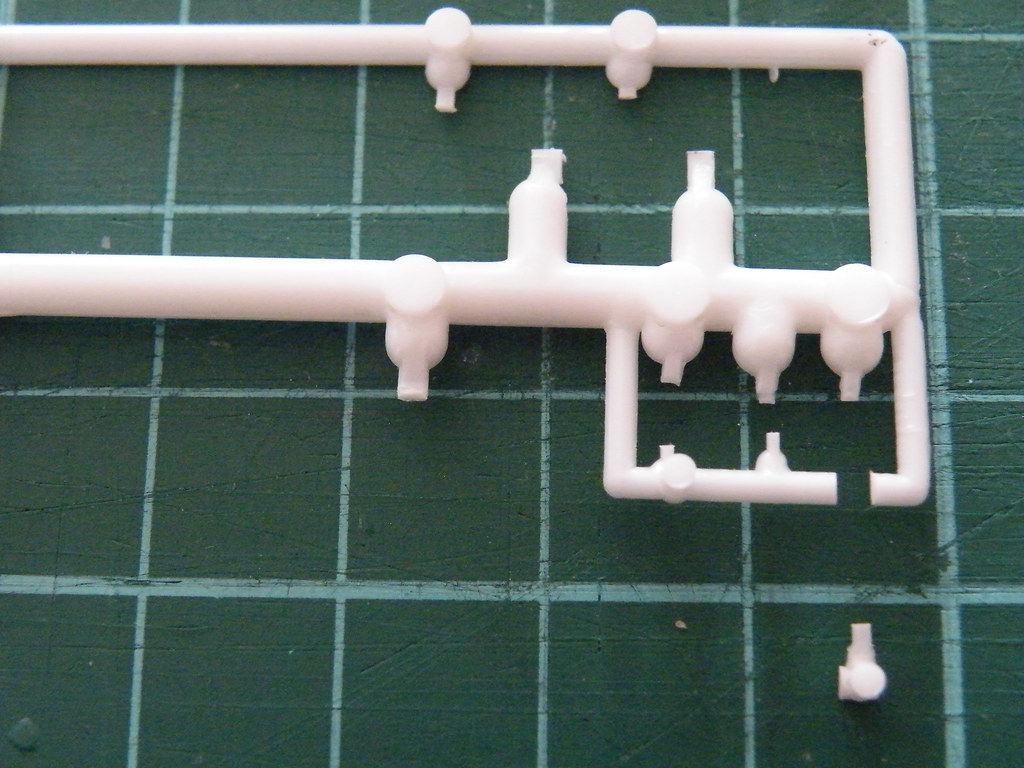
It didn't take much thought to realise that a suitable pulley could be cut from the spare plastic sprue (actually by my wife who fished the bits of surplus plastic out of the kitchen waste bin).
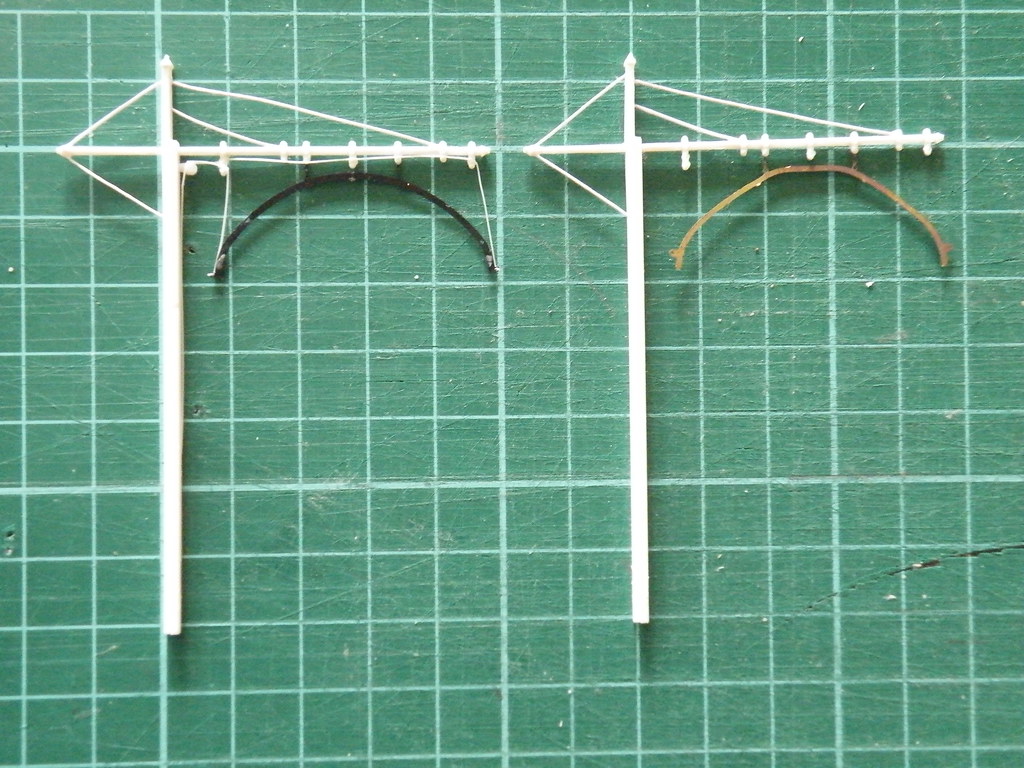
The view above compares gauges with and without the rigging. Below the finished gauge in position.
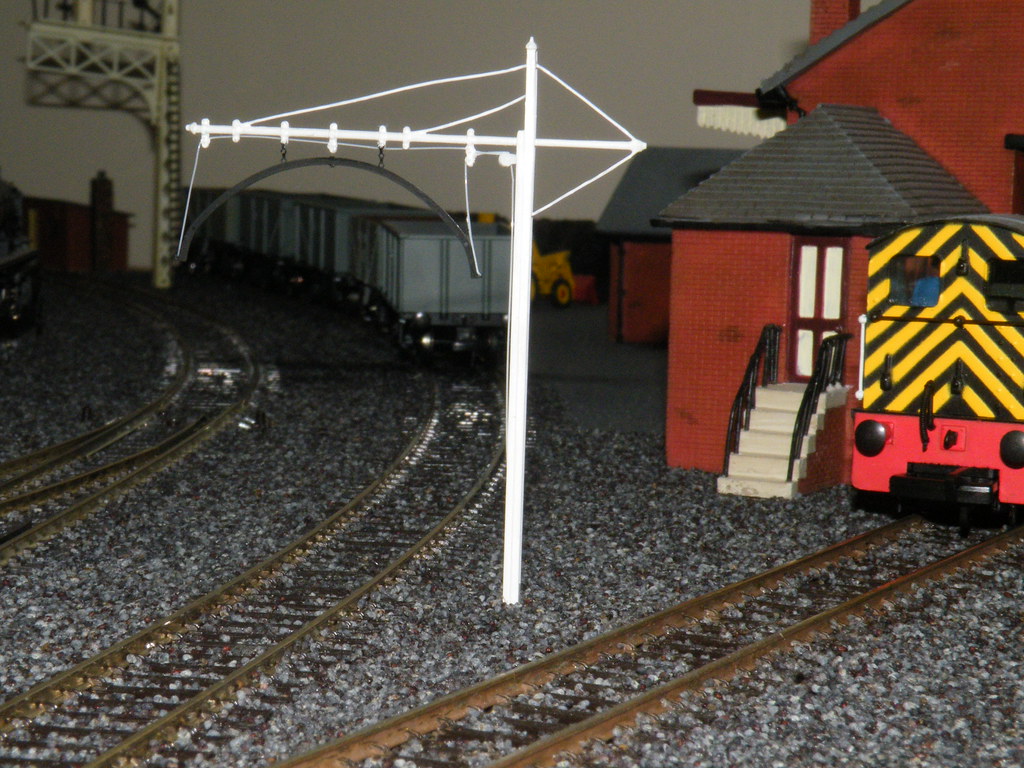
There are some useful drawings and pictures available in my favourite GWR reference book (A pictorial record of Great Western Architecture, A Vaughan (1977), Oxford Publishing Company, pp373-375). The pictures appear to show the rigging made from white rope, with the separate lengths from the opposite sides of the loading gauge joined together prior to passing over the corner pulley.
-
 2
2


.thumb.jpg.60c53fcbcaa34017b05b8919d1a9e6d2.jpg)

4 Comments
Recommended Comments
Create an account or sign in to comment
You need to be a member in order to leave a comment
Create an account
Sign up for a new account in our community. It's easy!
Register a new accountSign in
Already have an account? Sign in here.
Sign In Now